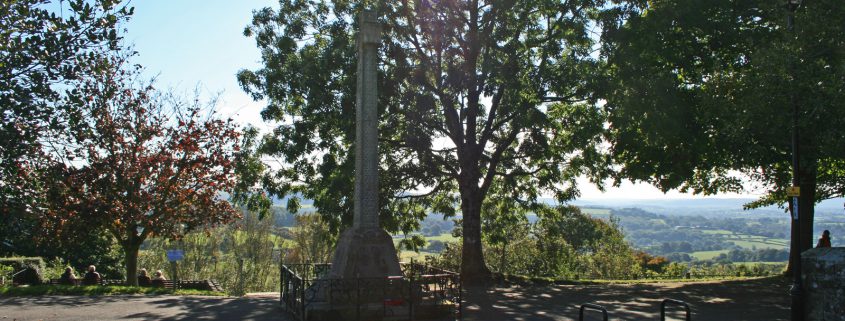Leslie Robert Gutsell
Surname: Gutsell
Other names: Leslie Robert
Locations in this story: DorchesterFrance & FlandersTheipval Memorial, SommeGreenslede, BasingstokeSt. Peter's Church, ShaftesburyHoly Trinity Church, ShaftesburyHigh Street, ShaftesburyCoventryGueudecourt
Story: Leslie Robert Gutsell was born in 1896 in Dorchester. He was the son of Robert Gutsell, a draper, and Mary Ann Gutsell (nee Godly). At the time of the 1911 Census he was single and living at Greenslede, Basingstoke. Between the Census and the outbreak of war he had moved to Shaftesbury and become a Teacher (as well as a Scoutmaster). (His mother was living at 34 High Street, Shaftesbury by 1918.)
Leslie enlisted in Coventry as a Gunner in the Machine Gun Corps (Service No. 2518) and later transferred to the Motor Machine Gun Service Royal Artillery in 'D' Company, No. 1 Section. He served in France and Flanders and was assigned to some of the very earliest tanks used in the war and became a gunner in Tank D5 (Dolphin). He was one of the first casualties of tank warfare, being killed in action in his vehicle at approximately 10 a.m. on 15th September, 1916, during the Battle of Flers-Courcelette near the village of Gueudecourt. His body was recovered by his comrades on 30th September and buried in the vicinity but, due to further hostile activity, the site was lost and his remains were not recovered for proper burial. He was awarded the Victory and British War medals and his name appears on the Theipval Memorial (Pier/Face 5C & 12C). He is remembered on the Park Walk War Memorial and on the Holy Trinity Memorial, now in St. Peter's Church, Shaftesbury.
Leslie enlisted in Coventry as a Gunner in the Machine Gun Corps (Service No. 2518) and later transferred to the Motor Machine Gun Service Royal Artillery in 'D' Company, No. 1 Section. He served in France and Flanders and was assigned to some of the very earliest tanks used in the war and became a gunner in Tank D5 (Dolphin). He was one of the first casualties of tank warfare, being killed in action in his vehicle at approximately 10 a.m. on 15th September, 1916, during the Battle of Flers-Courcelette near the village of Gueudecourt. His body was recovered by his comrades on 30th September and buried in the vicinity but, due to further hostile activity, the site was lost and his remains were not recovered for proper burial. He was awarded the Victory and British War medals and his name appears on the Theipval Memorial (Pier/Face 5C & 12C). He is remembered on the Park Walk War Memorial and on the Holy Trinity Memorial, now in St. Peter's Church, Shaftesbury.







